Painting According to Frieze New York
2015-05-25
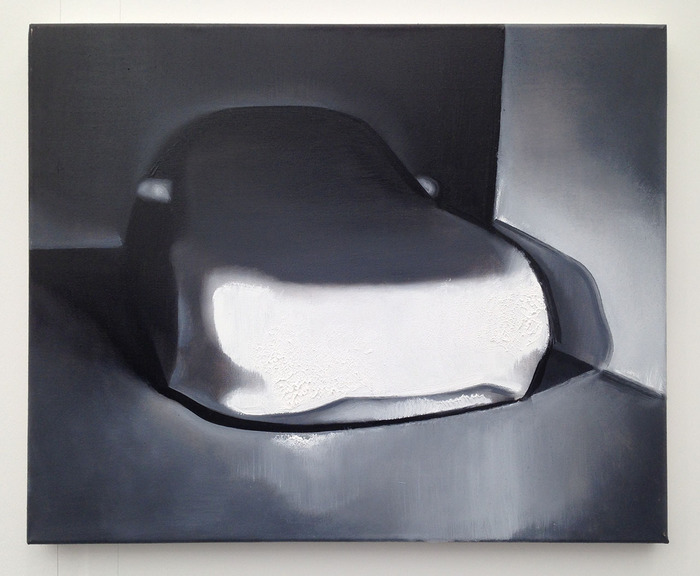 Wilhelm Sasnal, “Untitled (car)” (2015), oil on canvas, 40×40 cm at Foksal Gallery Foundation
Wilhelm Sasnal, “Untitled (car)” (2015), oil on canvas, 40×40 cm at Foksal Gallery Foundation
It’s been about a hundred years since Kazimir Malevich supplanted all imagery in painting with iconic shapes that point not to this world but to one he thought would come. It was around the same time Marcel Duchamp put a handlebar mustache on the Mona Lisa and titled the work “L.H.O.O.Q.” — or “She is hot in the arse.” It was a time of agitation that proved critical to painting’s history as methods of filling up the canvas split, for the most part, in two directions: one of abstraction or non-objectivity; and another that held ground representing “things of the world,” however absurd or beautiful. This year’s Frieze New York art fair on Randall’s Island shows artists using both methods in collision or collusion in a struggle to find firmer artistic footing.
The need for footing comes from a growing restlessness with riffing on 20th century abstraction and the inability to sustain irony, a once-dominant theme in recent representational painting, since it is more of a pretense of not caring rather than a risk of vulnerability. These methods may be losing their effectiveness, and, since painting never dies, new ways of pushing forward emerge.
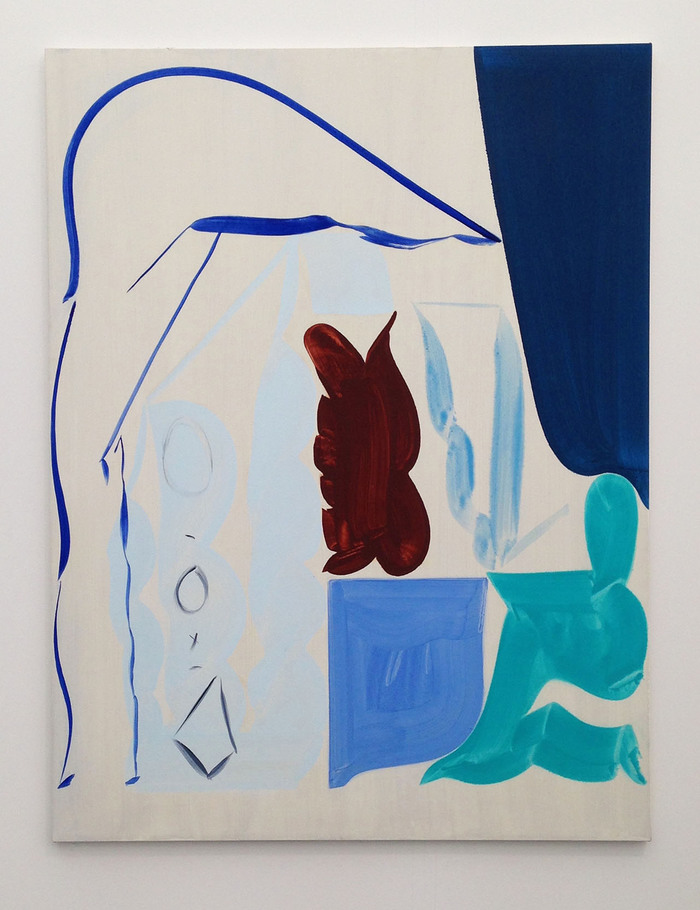 Patricia Treib, “As-of-yet-untitled” (2015), oil on canvas, 66 × 50 inches at Wallspace Gallery
Patricia Treib, “As-of-yet-untitled” (2015), oil on canvas, 66 × 50 inches at Wallspace Gallery
Patricia Treib’s “As-of-yet-untitled” (2015) in Wallspace Gallery‘s booth either is abstractly figurative or figuratively abstract — complete and without tension. The relaxed, abled gestures and colors of Matisse suggest a sense of place and life of leisure, without giving us the goods or robbing us of their pleasure. Paul Heyer’s “Burnout,” an acrylic and oil on silk painting tucked around the corner of Night Gallery‘s booth, presses ordered black splotches against a facile rendering of flowers painted in watery pastel colors. The bold and abstract interruptions provide both a tension between types of picture-making and compositional stability, a structure holding all elements into place.
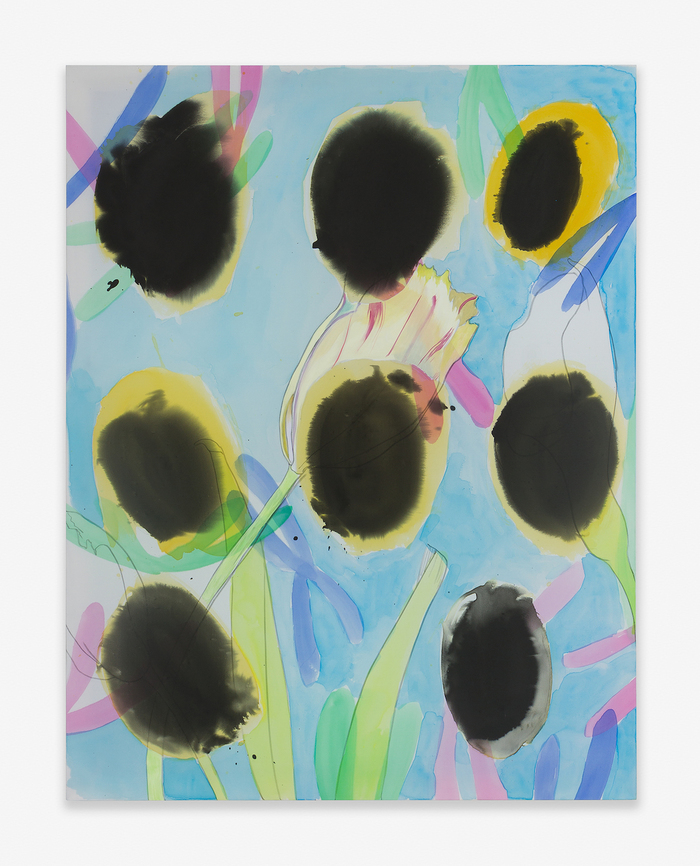 Paul Heyer, “Burnout” (2015), oil and acrylic on silk
Paul Heyer, “Burnout” (2015), oil and acrylic on silk
The multiple ways in which artists at Frieze mine the languages of both the abstract and representational traditions, in their multiple iterations however broadly conceived, remind us that every mode of working has a time, place, and specific motivation. From sublime geometries and Freudian dreams to fits of anxiety seeking universal expression and commercially-produced homogenous batches, all artistic fabrications have a context. So when today’s artists seek stability, erasure, or obfuscation by combining image-based content with abstract impulses, these visual inheritances and borrowings are transparent enough to put in high relief the strengths — and weaknesses — of artists’ imaginations.
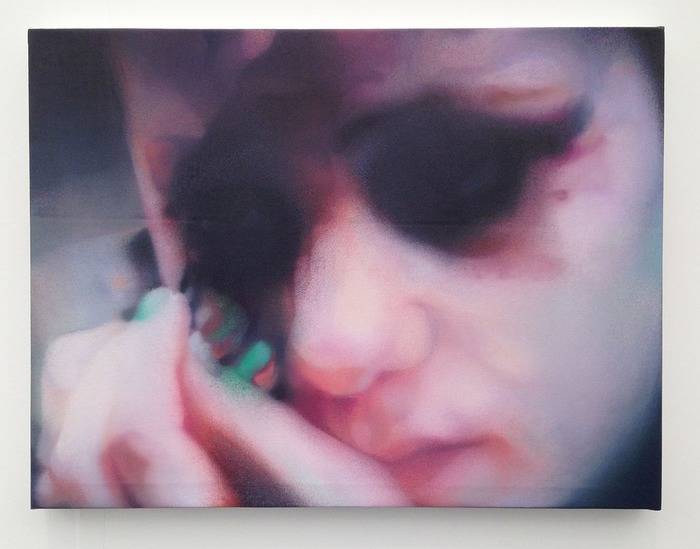 Johannes Kahrs, “OT (green fingernails)” (2015), oil on canvas, 44.4 × 48.2 cm at Zeno X Gallery
Johannes Kahrs, “OT (green fingernails)” (2015), oil on canvas, 44.4 × 48.2 cm at Zeno X Gallery
Johannes Kahrs’s “OT (green fingernails)” (2015), in the booth of Antwerp’s Zeno X Gallery, is sexy without substance. The reproduced image, sourced from a photograph or video, uses seediness in the lives of others to convey a sense of raw experience, like a short-cut search for authenticity. Figuration or “the real” is here depleted through cropping and blurring, a splicing effect that flirts with obliteration. George Shaw’s painting “She Had an Horror of Rooms” (2014–15) in the Wilkinson Gallery booth, of wood scraps resting in leaves, could be the remains of a discarded project or hobby, or a realist painter’s examination of failed Bauhaus ideals.
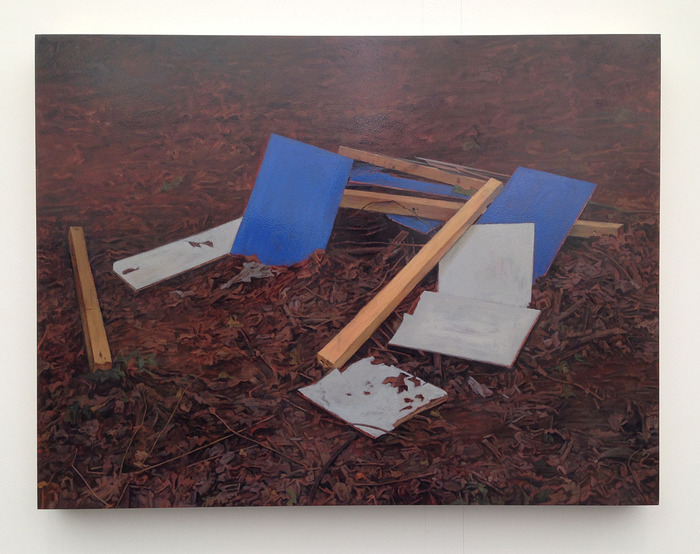 George Shaw, “She Had an Horror of Rooms” (2014–15), Humbrol enamel on board, 56 × 74.5 cm at Wilkinson Gallery
George Shaw, “She Had an Horror of Rooms” (2014–15), Humbrol enamel on board, 56 × 74.5 cm at Wilkinson Gallery
In the Taro Nasu booth, Simon Fujiwara’s “Fabulous Beasts” brings “the real” into abstraction, sewing and stretching together swaths of shaved fur coats for a result that’s close enough to painting for me. Possible associations include Dadaist sculpture and linear abstract painting. Jens Fänge’s assemblage on panel in Galleri Magnus Karlsson‘s booth recalls early Cubism and mid-century photomontage.
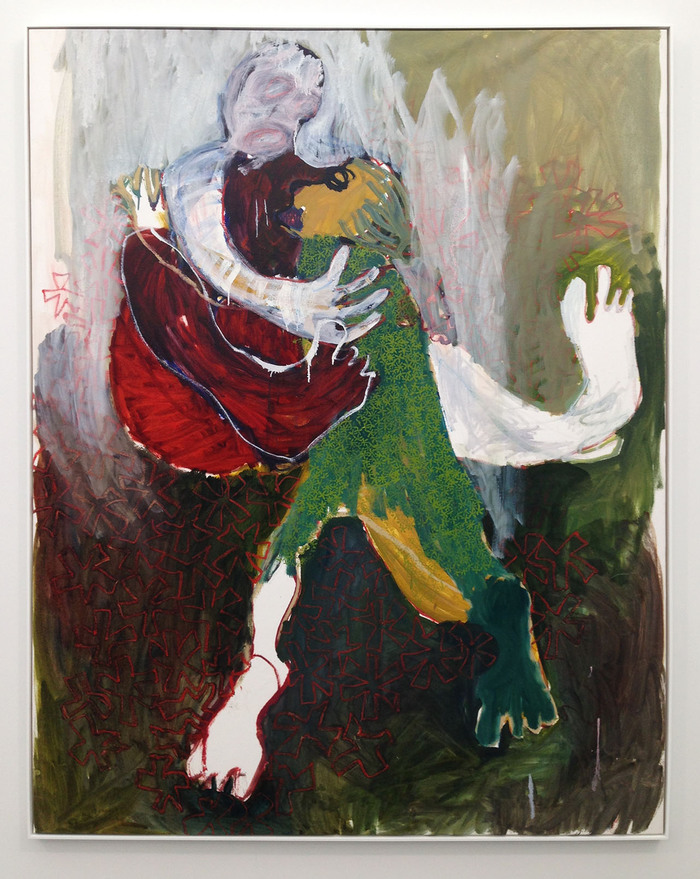 Portia Zvavahera, “I Can Feel It in My Eyes 16” (2015), oil-based print ink and oil bar on canvas, 209.5 × 163.5 cm at Stevenson
Portia Zvavahera, “I Can Feel It in My Eyes 16” (2015), oil-based print ink and oil bar on canvas, 209.5 × 163.5 cm at Stevenson
The most accomplished paintings at this year’s Frieze are by Zimbabwean artist Portia Zvavahera. Her “I Can Feel It in My Eyes 16” (2015) is one of several beatific visions of corporeal entanglement nearly lifting themselves off Stevenson gallery’s booth walls. With the strength of Marc Chagall’s spiritual interiority, she envisions a world of romantic longing hardly seen since Gustav Klimt.
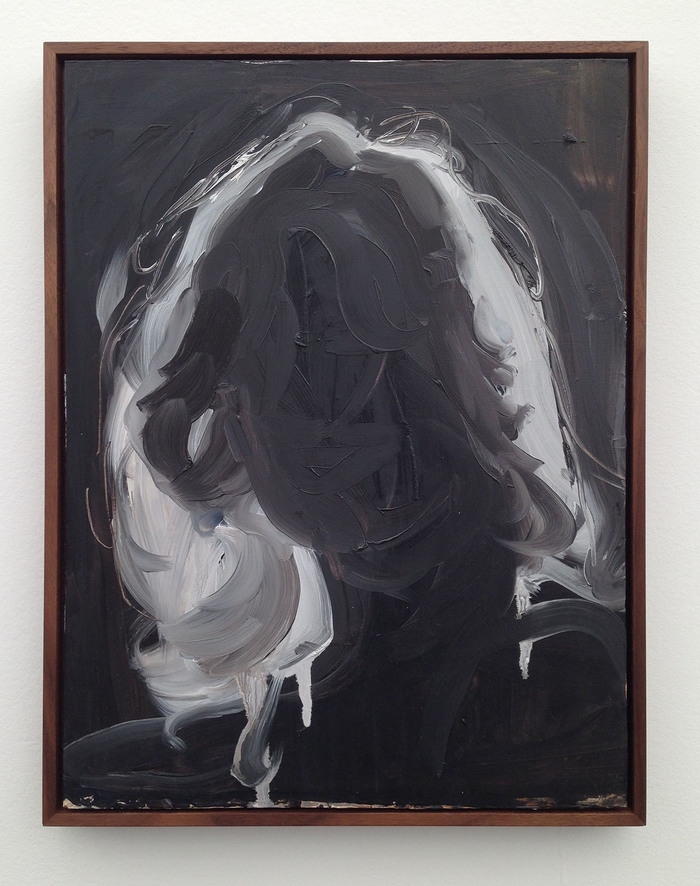 Anna Bjerger, “Halo” (2015), oil on aluminum, 50 × 40 cm at Galleri Magnus Karlsson
Anna Bjerger, “Halo” (2015), oil on aluminum, 50 × 40 cm at Galleri Magnus Karlsson
Anna Bjerger’s “Halo,” also hanging in Galleri Magnus Karlsson’s booth, features luscious, buttery paint that in its own right commands attention. But in the painting’s facile slips and turns, a remarkable articulation of a woman, lit from the back, appears with the same sense of seduction. More cold in feeling, but likewise straddling the abstract-representational divide, is Wilhelm Sasnal’s “Untitled (car)” in the Foksal Gallery Foundation booth.
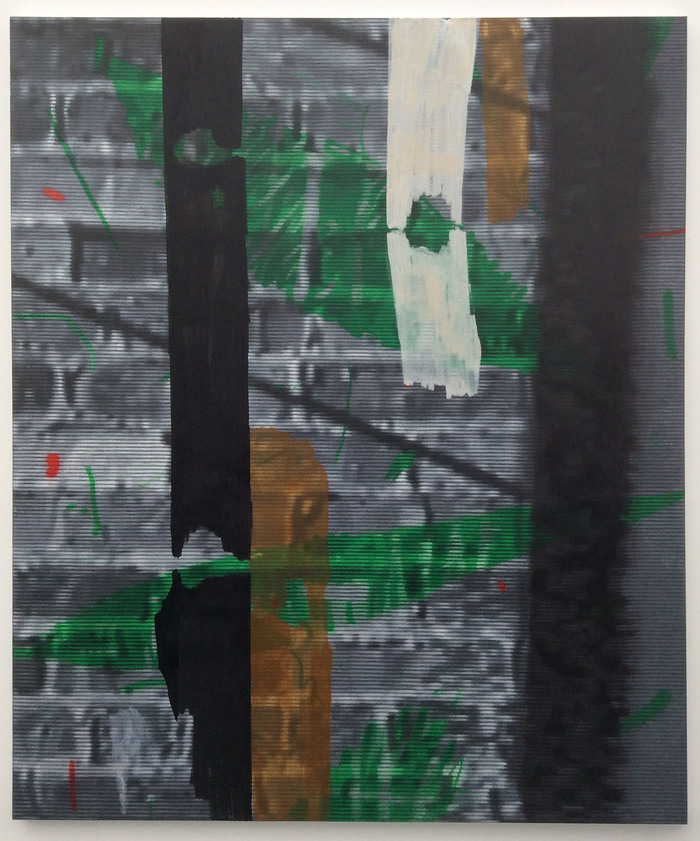 Kon Trubkovich, “A heart with an iron lining” (2015), oil on canvas, 72 × 60 in at Marianne Boesky Gallery
Kon Trubkovich, “A heart with an iron lining” (2015), oil on canvas, 72 × 60 in at Marianne Boesky Gallery
The most prominent example of strategic collision is Kon Trubkovich’s “A heart with an iron lining” (2015) at Marianne Boesky‘s booth. Rather like video and paint in conflict, the work, all in oil, is more cerebral than enticing. Zhang Hui’s “Pearl 2” (2015) at Long March Space is more tactile, inviting touch and wondrous questions. Like the modernist method of “all-over painting,” whereby the entire canvas is covered and never lets the viewers’ eyes rest, Mircea Suciu‘s “Iron Curtain” (2015) at Zeno X Gallery covers the “subject,” all over, in suffocating plastic.
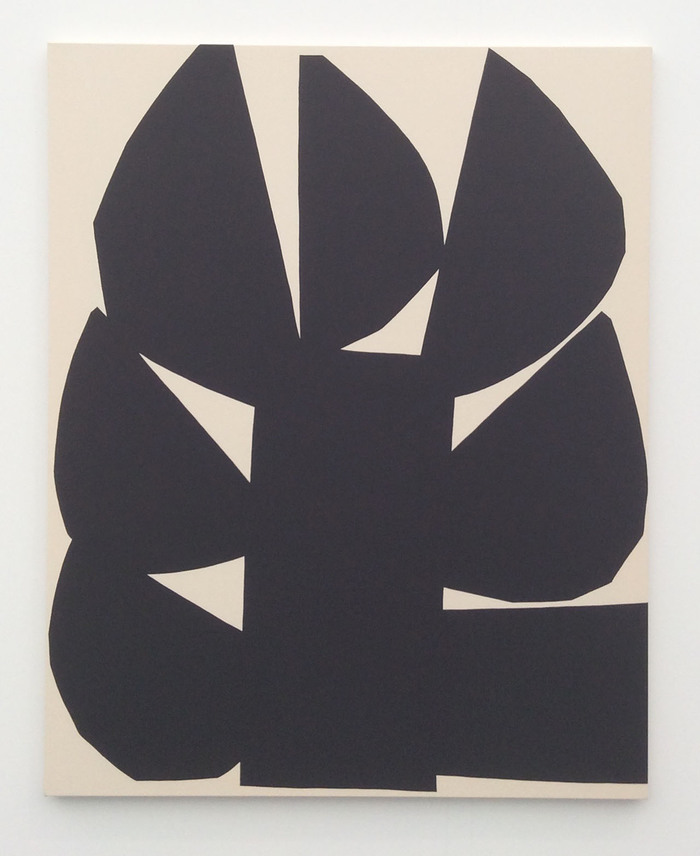 Peter Davies, “Come Hither” (2015), acrylic on canvas, 59 13/16 × 48 in at The Approach
Peter Davies, “Come Hither” (2015), acrylic on canvas, 59 13/16 × 48 in at The Approach
Peter Davies’s “Come Hither” (2015) at The Approach‘s booth is geometric abstraction waving its hand or growing from the ground and reaching into the air. The black masses, all joined, fill the canvas plane to create a sense of activity within the flattened space. In the Modern Institute‘s booth, Urs Fischer channels Willem de Kooning to confront an aged photograph of a stool and magazine rack, setting a replica of mass produced images and articles — light fare — against the self-serious ethos of Abstract Expressionism. A comparatively older work at the fair, yet one that is resolutely contemporary, is Larry Bell’s “Big Mirage Painting #53” from 1991. By introducing to a reductive abstract composition various reflected lights, kaleidoscopic and variant in intensities, Bell gives represented “materials” a sense of non-objectivity, a kind of constructed non-space. That White Cube chose to show the piece here highlights the singularity of Bell’s work.
Exceptions prove the rule at Frieze, even though there are no rules in what artists here are doing. That openness to potential, space, and means ready for invention — or possible lapses into pastiched mimicking — makes the fair exciting and gives reason to believe that painting around the world is turning a corner.
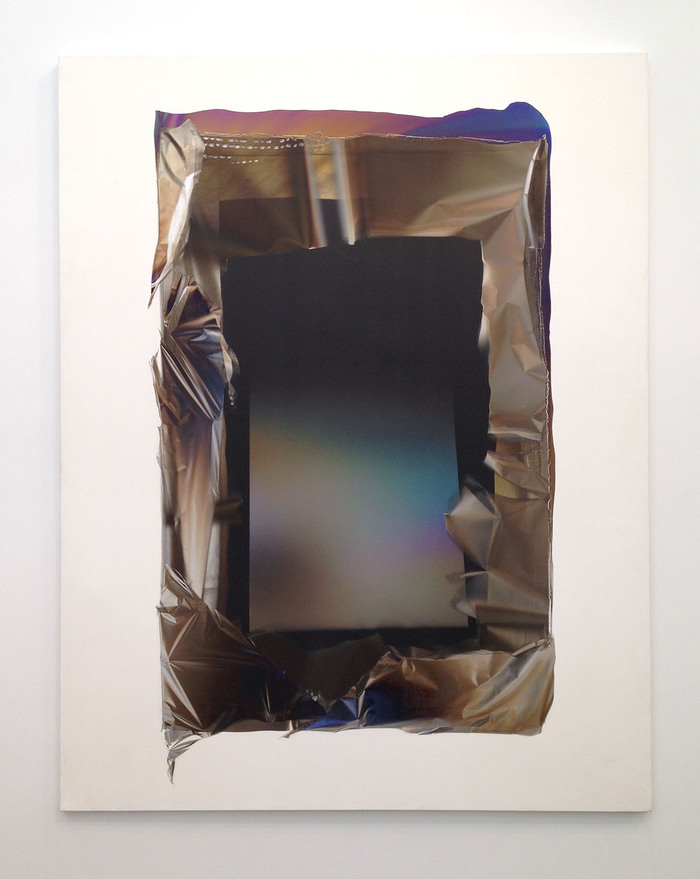 Larry Bell, “Big Mirage Painting #53” (1991), mixed media on canvas, 89 9/16 × 70 3/8 in at White Cube
Larry Bell, “Big Mirage Painting #53” (1991), mixed media on canvas, 89 9/16 × 70 3/8 in at White Cube
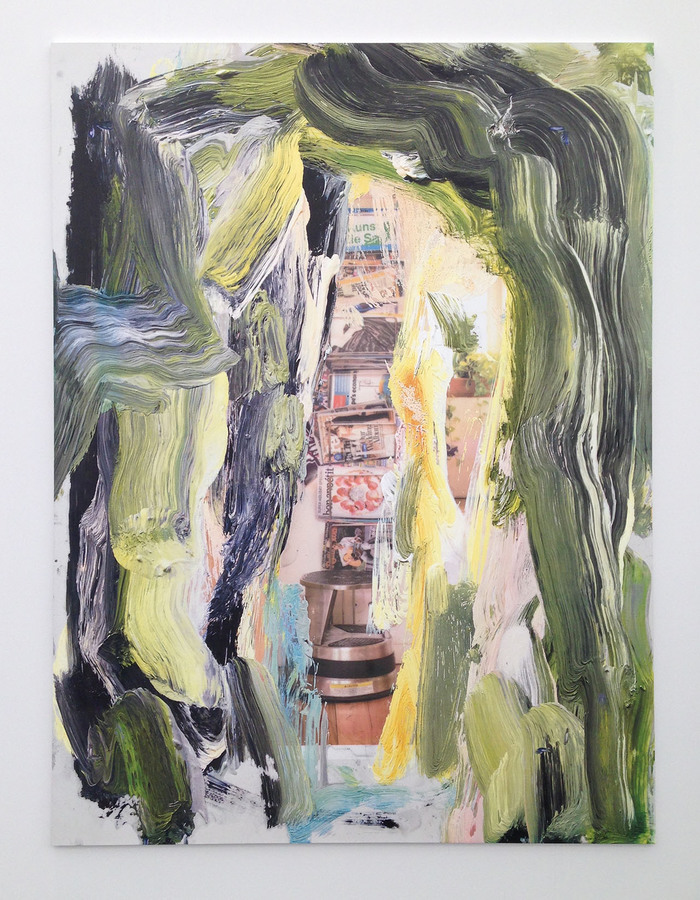 Urs Fischer, “Free advice is usually worth what you paid for it” (2015)
Urs Fischer, “Free advice is usually worth what you paid for it” (2015)
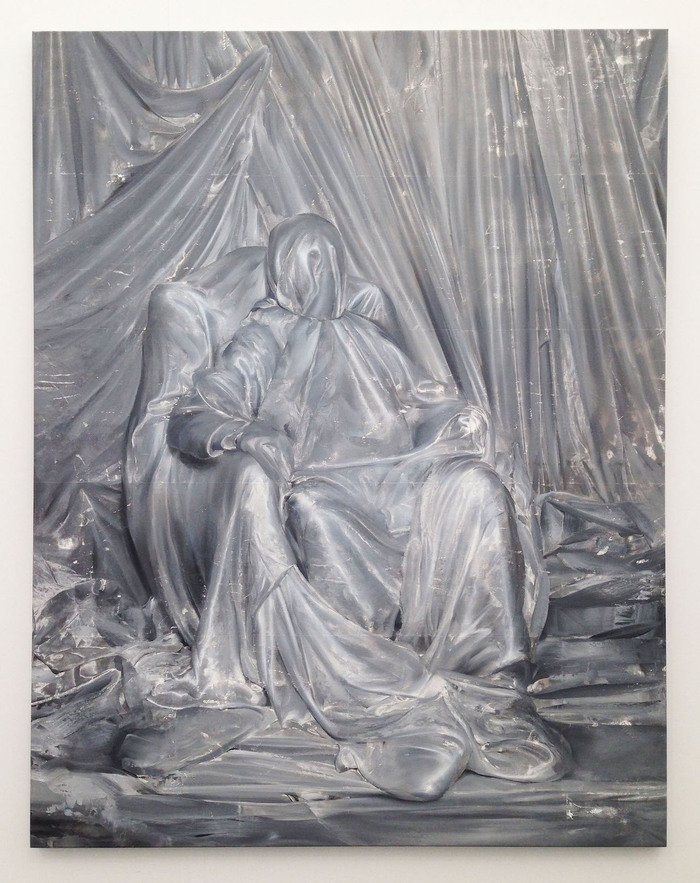 Mircea Suciu, “Iron Curtain” (2015), oil, acrylic, and mono print on linen, 156 × 121.8 cm at Zeno X Gallery
Mircea Suciu, “Iron Curtain” (2015), oil, acrylic, and mono print on linen, 156 × 121.8 cm at Zeno X Gallery
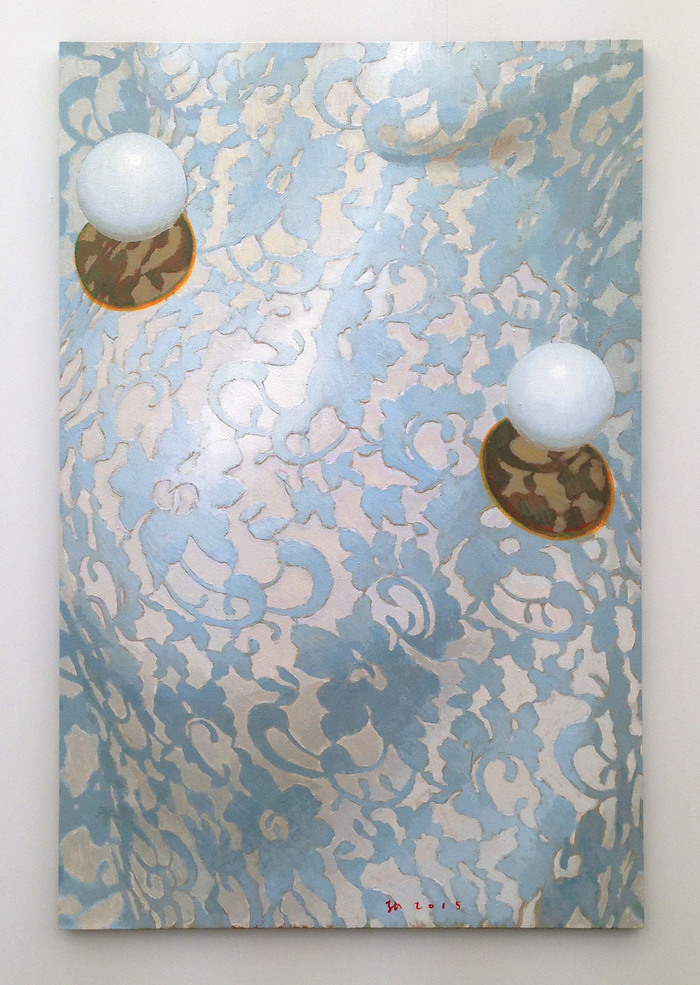 Zhang Hui, “Pearl 2” (2015), acrylic on canvas, 180 × 116 cm at Long March Space
Zhang Hui, “Pearl 2” (2015), acrylic on canvas, 180 × 116 cm at Long March Space
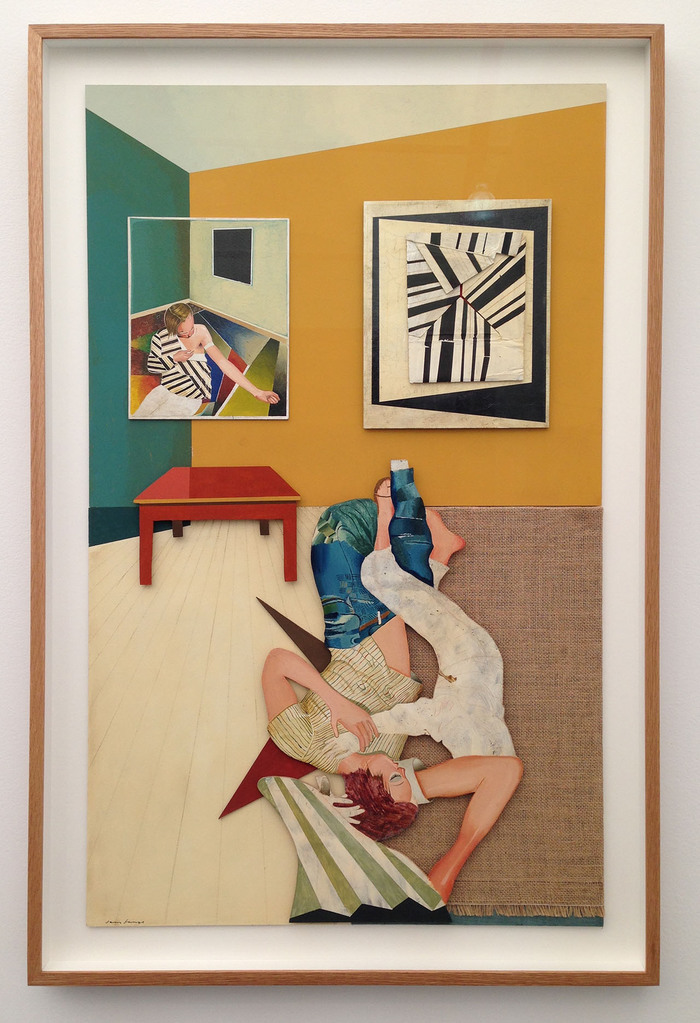 Jens Fänge, “The Inner Wedding” (2015), assemblage on panel, 112 × 75 cm at Galleri Magnus Karlsson
Jens Fänge, “The Inner Wedding” (2015), assemblage on panel, 112 × 75 cm at Galleri Magnus Karlsson
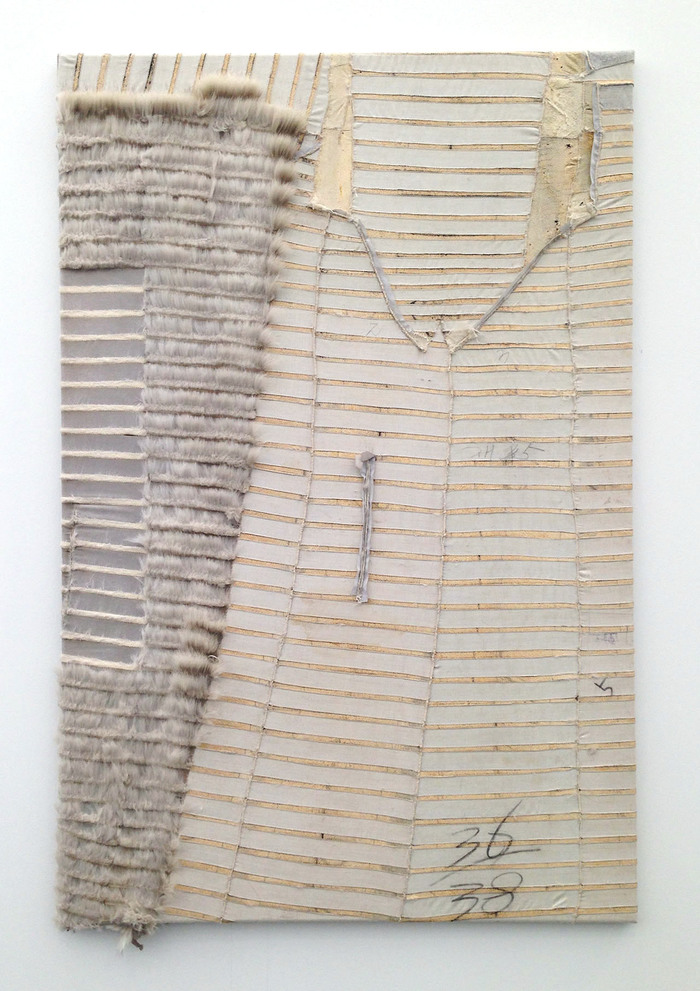 Simon Fujiwara, “Fabulous Beasts” (2015), shaved fur coat, 115 × 65 cm at Taro Nasu
Simon Fujiwara, “Fabulous Beasts” (2015), shaved fur coat, 115 × 65 cm at Taro Nasu
“Source Hyperallergic”: http://hyperallergic.com/207433/painting-according-to-frieze-new-york/